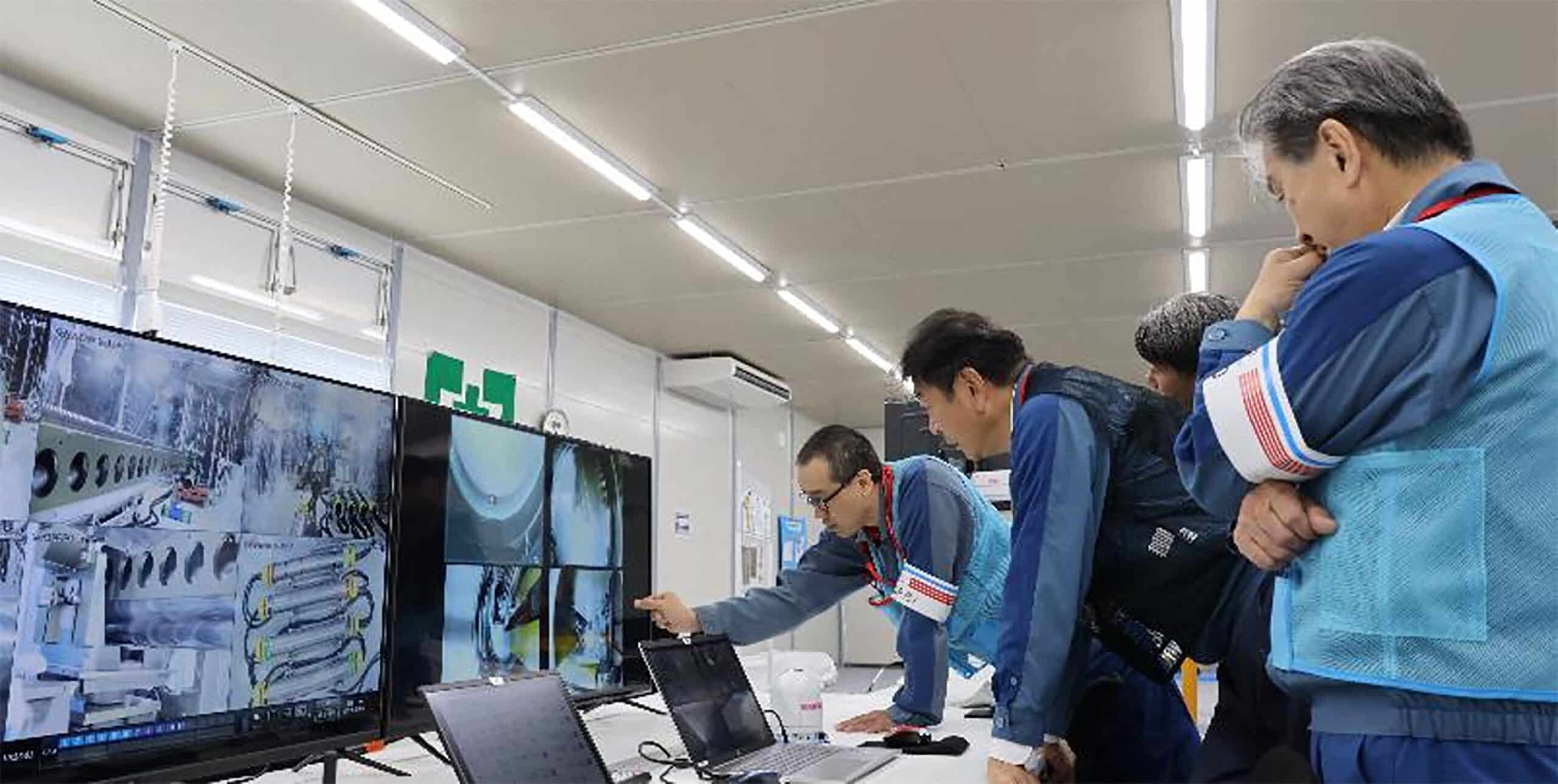
This handout photo taken on September 9, 2024, and received from Tokyo Electric Power Company (TEPCO) on September 10, 2024, shows TEPCO staff members checking in the operations room as the push pipes used for the removal of radioactive debris are rearranged in the correct order, at TEPCO’s Fukushima Daiichi nuclear power plant in Okuma, Fukushima prefecture. – A difficult operation to remove a small amount of radioactive debris from the stricken Fukushima nuclear plant of Japan began on September 10, after technical issues suspended an earlier attempt. Photo by Handout / Agence France-Presse Photo / TOKYO ELECTRIC POWER COMPANY HOLDINGS, INC. (TEPCO)
TOKYO, JAPAN — The operator of stricken Fukushima nuclear plant in Japan will resume an operation to remove a sample of highly radioactive material next week, reports said Friday, after having suspended the effort over a technical snag.
Extracting the estimated 880 tons of highly radioactive fuel and debris inside the former power station remains the most challenging part of decommissioning the facility, which was hit by a catastrophic tsunami in 2011.
Radioactivity levels inside are far too high for humans to enter, and last month engineers began inserting an extendable device to try and remove a small sample.
However, operator Tokyo Electric Power Company (TEPCO) had to halt the procedure after noticing that remote cameras on the apparatus were not beaming back images to the control center.
READ: Trial removal of nuclear debris from Fukushima reactor begins
TEPCO on Friday said it would resume the removal on Monday after replacing the cameras with new ones, the Asahi Shimbun daily and other local media reported.
TEPCO officials could not immediately be reached to confirm the reports.
Three of Fukushima’s six reactors went into meltdown after a tsunami triggered by Japan’s biggest earthquake on record swamped the facility in one of the world’s worst atomic accidents.
READ: Japan shifting back to nuclear to ditch coal, power AI
Japan last year began releasing into the Pacific Ocean some of the 540 Olympic swimming pools’ worth of reactor cooling water amassed since the catastrophe.
China and Russia banned Japanese seafood imports as a result although Tokyo insists the discharge is safe, a view backed by the UN atomic agency.
Beijing last month said it would “gradually resume” importing seafood from Japan after imposing the blanket ban.
In a TEPCO initiative to promote food from the Fukushima area, swanky London department store Harrods began selling peaches grown in the region last month.